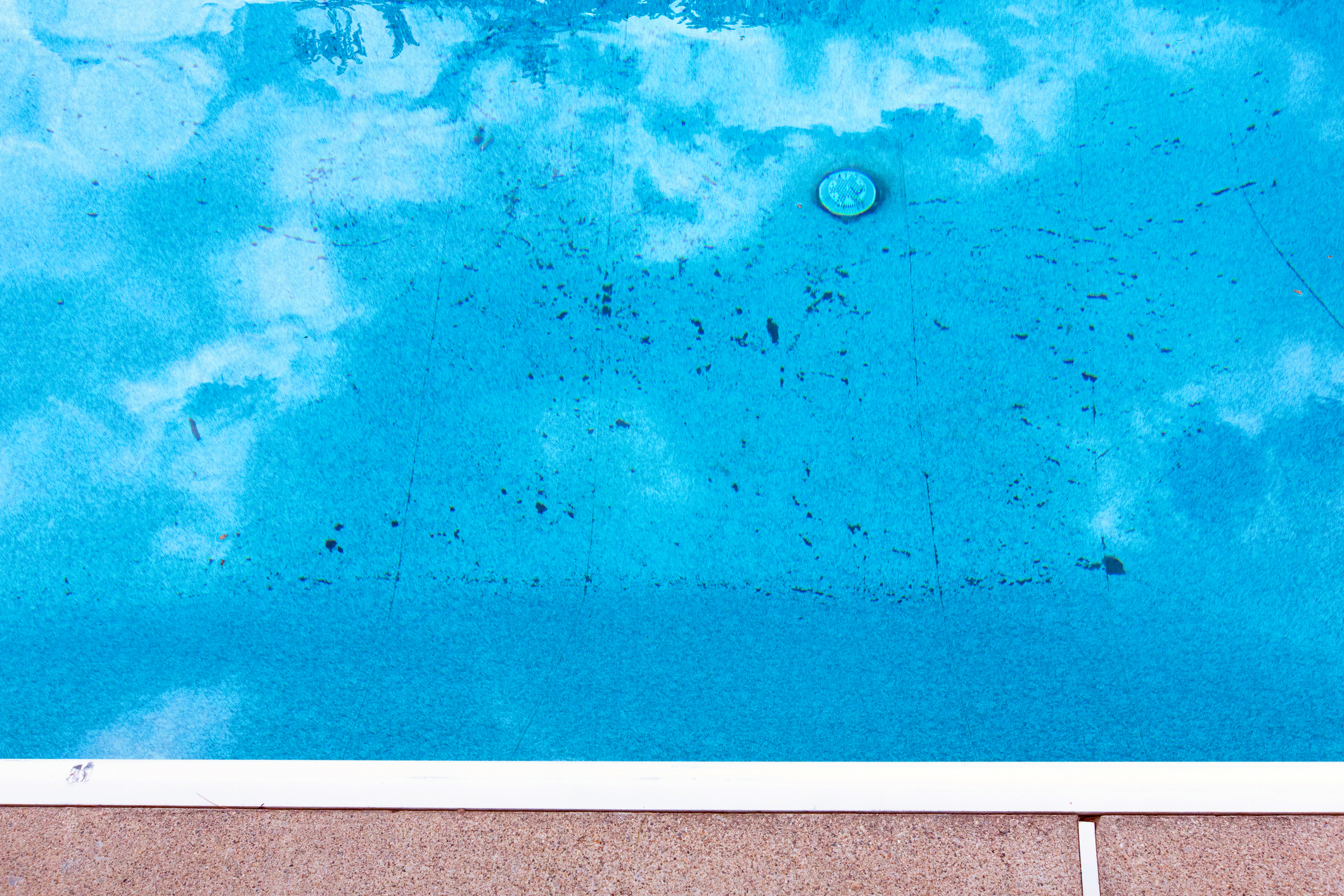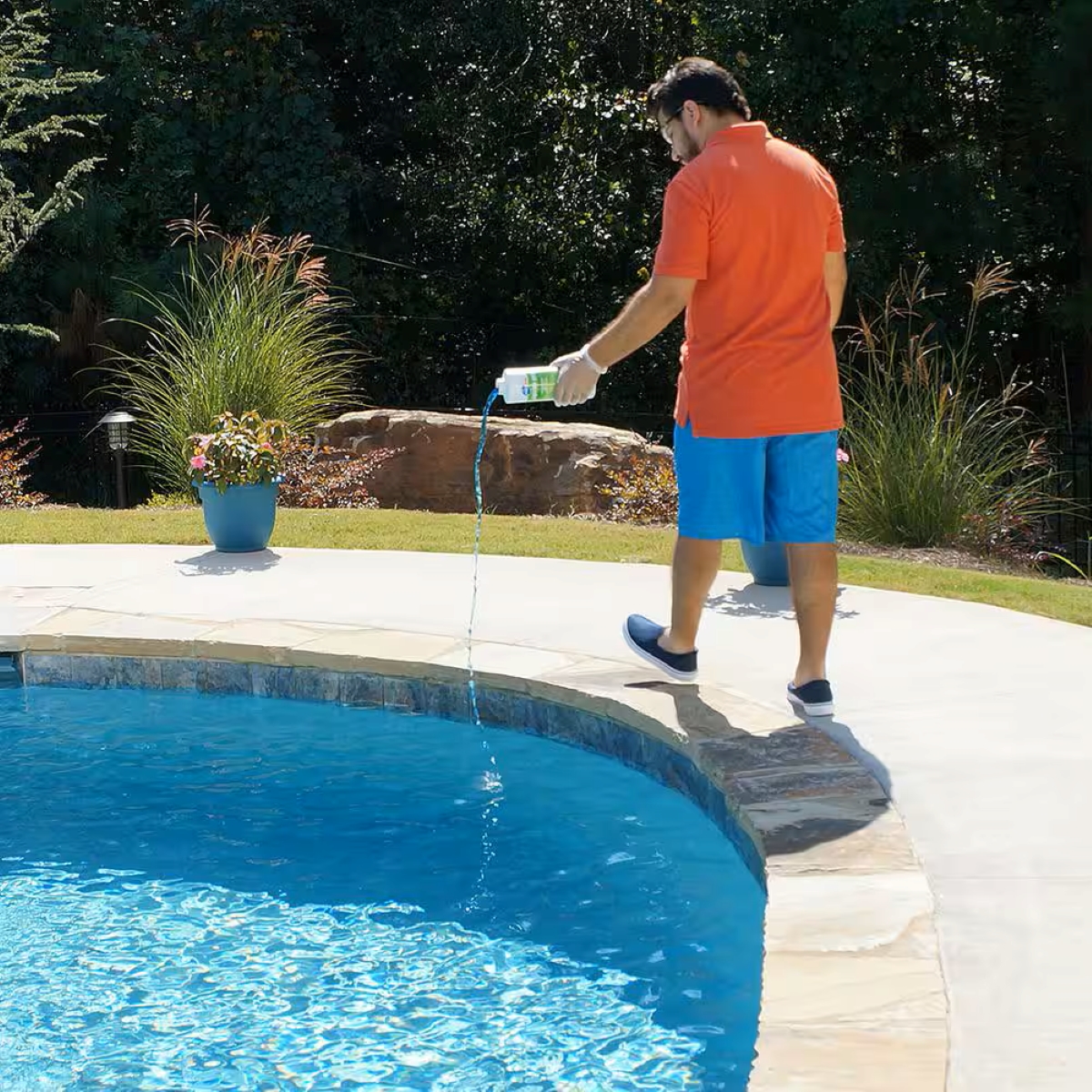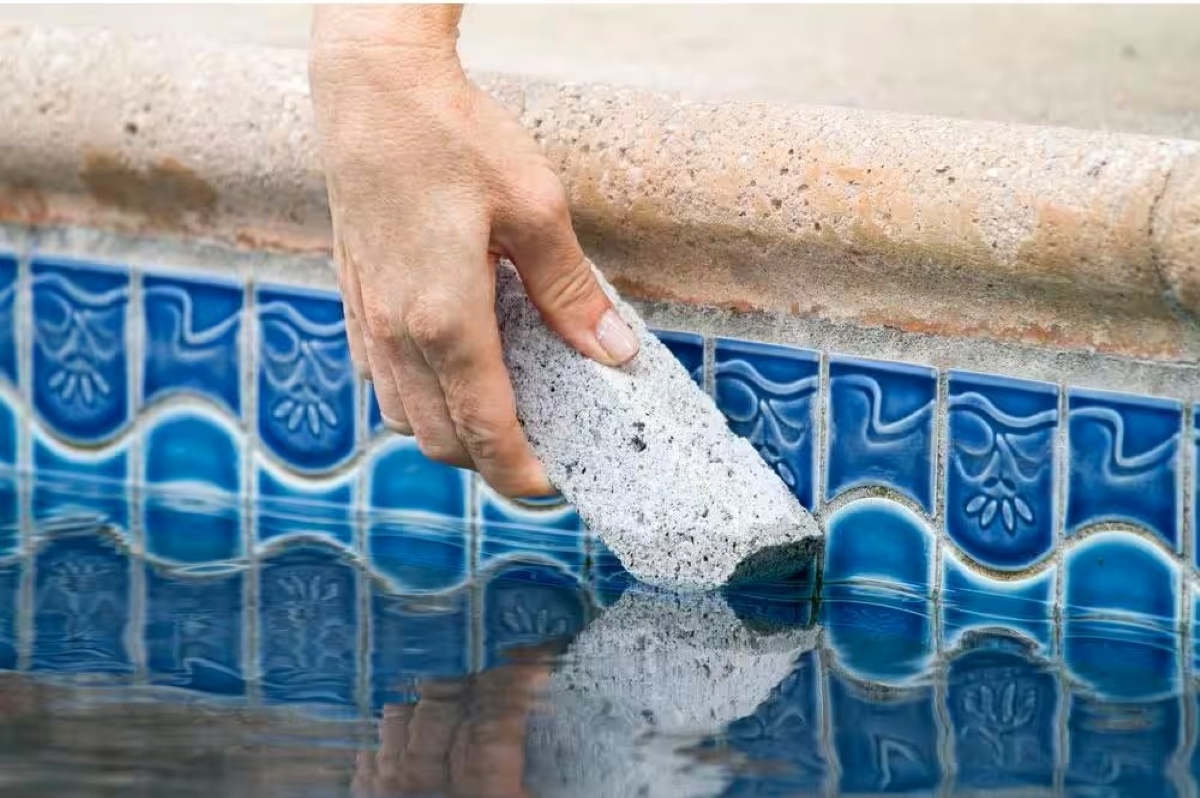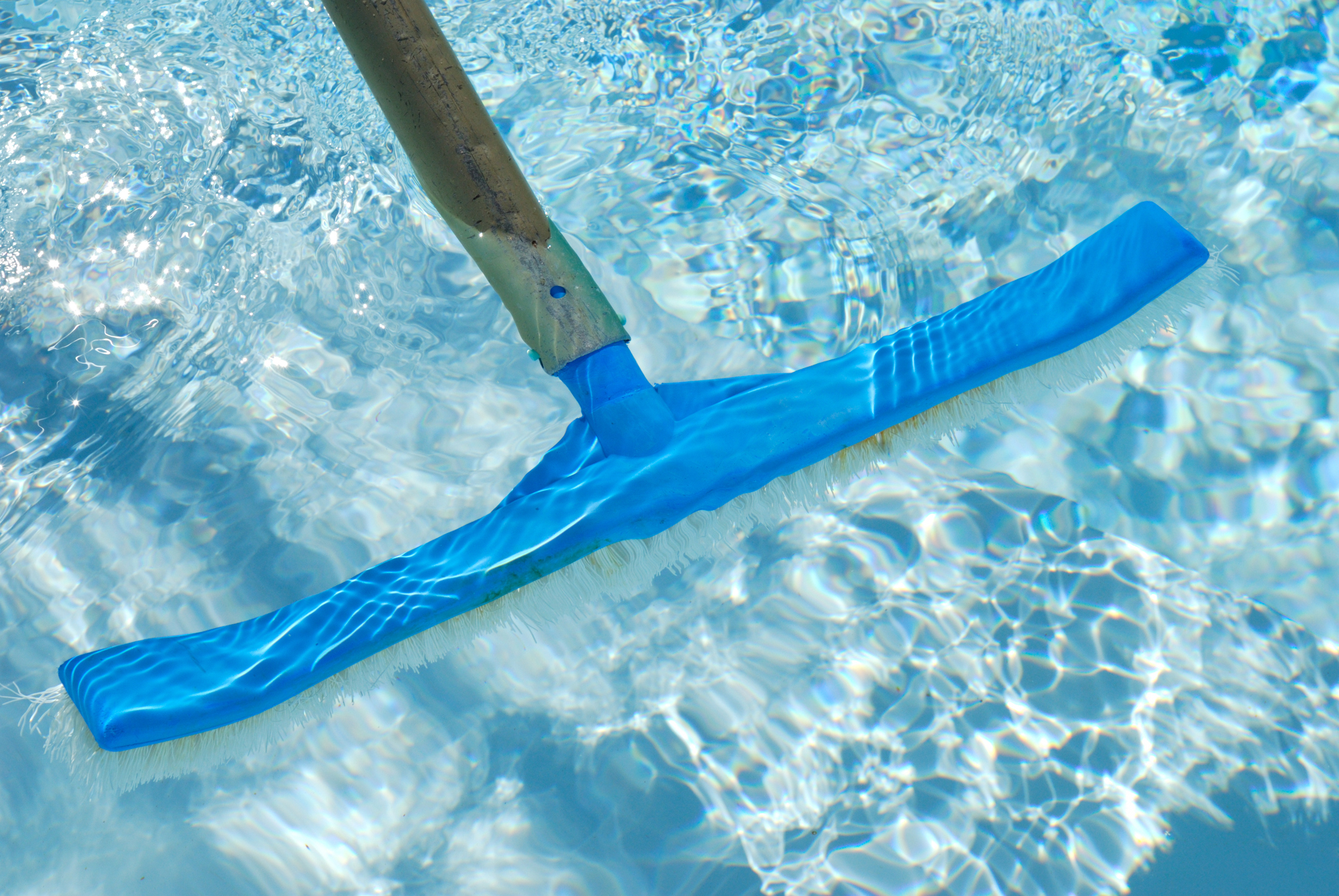We may earn revenue from the products available on this page and participate in affiliate programs. Learn More ›
Black algae in a pool is not just unsightly. Although it isn’t harmful itself, it can spread rapidly and harbor dangerous bacteria, like E. coli, that can make swimmers sick. And if it gets into the pump and filtration system, it can damage equipment. Once established, it becomes a persistent problem and even when you think you’ve cleaned the pool properly, black algae can quickly reappear.
We consulted with installers and professional pool cleaning experts to learn how to get rid of black algae in a pool and how to prevent it from coming back.
What is Black Algae and Where Does it Come From?

Algae are mostly aquatic organisms that vary in size from microscopic to enormous. Kelp, which can grow to 200 feet long, is actually an algae. Many algae species are useful and ecologically beneficial—some are a valuable food source for freshwater and saltwater creatures and others are used as a biofuel.
Problems start to occur when certain types of algae grow rapidly and form mass blooms in our waterways. It can also happen in swimming pools, where they are one of the common reasons why the pool water goes green.
Black algae’s natural habitat is streams, rivers and lakes. Cross-contamination brings it into pools. Although black algae itself is not dangerous, it’s not a good idea to swim in an infected pool because of the risk that other more harmful bacteria are living in it.
How to Treat Black Algae in a Pool
Let’s look at two approaches to black algae removal based on how severe the problem is. The first is relatively easy, and it might work if you catch it early enough. The second is a proven process for combatting more serious infestations.
For lasting results, back up the black algae treatment with a regular pool maintenance regime.
Tools & Materials
Bobvila.com may earn a commission from purchases made through these links.
Project Overview
Time Required: 1 to 2 days
Skill Level: Beginner
Estimated Cost: $50 to $150
Before You Begin
Some of the products available can be unpleasant, and even dangerous in high doses. Always read the instructions carefully, and wear gloves and protective eyewear. Keep all chemicals away from children and pets. Bear in mind that in severe cases of black algae in a swimming pool, subsequent treatments may be necessary.
Step 1: Shock the pool.

Shocking a pool is the process of adding more chlorine (or a chlorine-type product) to kill off algae and bacteria. Many easy-to-use products are available. Some need to be dissolved beforehand, but others are added directly into the pool.
Shock your pool at dusk and leave it for eight hours.
Although shocking is sometimes suggested as a black algae treatment for pools, experts warn it has limited effect. Pool shock suppliers usually say that in cases of black algae, their product should be used at three to four times its normal strength. A more thorough cleaning may be necessary.
Step 2: Prepare the pool for treatment.
Although it’s quite likely there will be black algae on the bottom of a pool, it isn’t necessary to drain it. However, the pool needs some pre-treatment, which will also help stop the black algae from coming back.
First, clean the pool filter. Remove it and leave it to soak in a 50/50 solution of water and white vinegar for a couple of hours. While that’s happening, check your pool water levels.
As David Brabant, owner of Creative Edge Pools, points out, “Black algae thrives in alkaline water, so check your pH and alkalinity levels and balance as needed.”
Step 3: Treat the pool with an algaecide that contains copper.

One of the reasons why getting rid of black algae in a pool is so difficult is that it grows its own protective layer, preventing most shock treatments and algaecides from harming it. However, when we investigated the best pool algaecides, we found two products that contain copper, which is toxic to this type of growth. Either one is an effective black algae killer for pools of all types.
Each product is different, and it’s vital that the instructions provided are followed precisely. Applied Biochemist’s black algaecide often causes some foaming, whereas RX Clear’s formula doesn’t—but both are safe for swimming immediately after treatment. That said, you’ll probably be too busy to relax just yet.
Step 4: Time for some serious elbow grease.

While the algaecide treatments will get to work immediately, they need a helping hand. After adding your preferred black algae killer, it’s time to attack visible patches of algae on the bottom of the pool (and the sides) with a stiff brush.
The brush should have stainless steel or nylon bristles, depending on your pool type. In tiled or concrete pools, black algae can grow roots that latch onto the surface or grout. Pumice is the ideal pool cleaning product to address this issue. It’s especially useful against algae on pool walls and other places where using a brush can be awkward.
Run the pump while you’re scrubbing so that any debris is collected in the filter. When you’re finished, clean the filter again. A further dose of algaecide may be recommended periodically to keep the algae at bay.
Do not pressure wash your pool to get rid of black algae. Apart from the hassle (and expense) of draining and refilling the pool, it is unlikely to be successful. You need to get up close and personal to eradicate every last spot to fully clean the algae.
Step 5: Sanitize everything before it goes in the pool.
Rafi Friedman, president of pool specialists at Coastal Luxury Outdoors, gave us a key preventative measure in eradicating black mold in a swimming pool. “Sanitize anything that goes in the pool. Pool toys, skimmers, and even swimming suits that don’t get a chance to dry out properly between use can become breeding grounds for black algae, and eventually transfer them to your pool.”
This is particularly important to prevent cross-contamination, which can happen when someone has been swimming in a pond or river, or used inflatables in those places. Friedman adds, “Consider using bleach to clean these items if you’re fighting off an active algae infestation.”
Preventing Black Algae in a Swimming Pool

Whether it starts out as cloudy pool water or a few spots on the floor or walls, swimming pool black algae can be a persistent nuisance and a health risk. The secret to successfully getting rid of it is to act fast, clean thoroughly using the steps above, and to check and maintain your pool regularly. It may not be the most fun job in the world, but it’s definitely one of those times when prevention is better than cure, and you’ll have more time to enjoy the pool with your family and friends.


